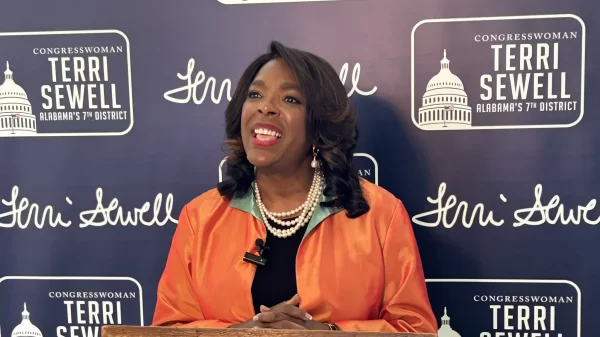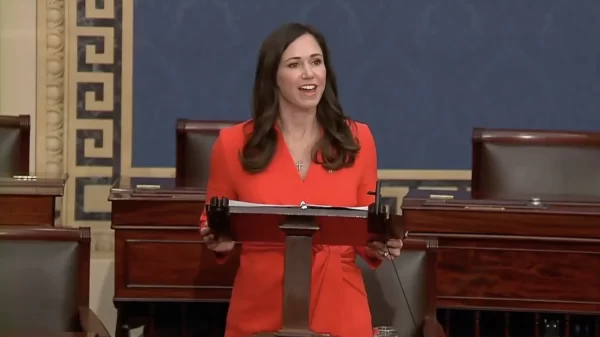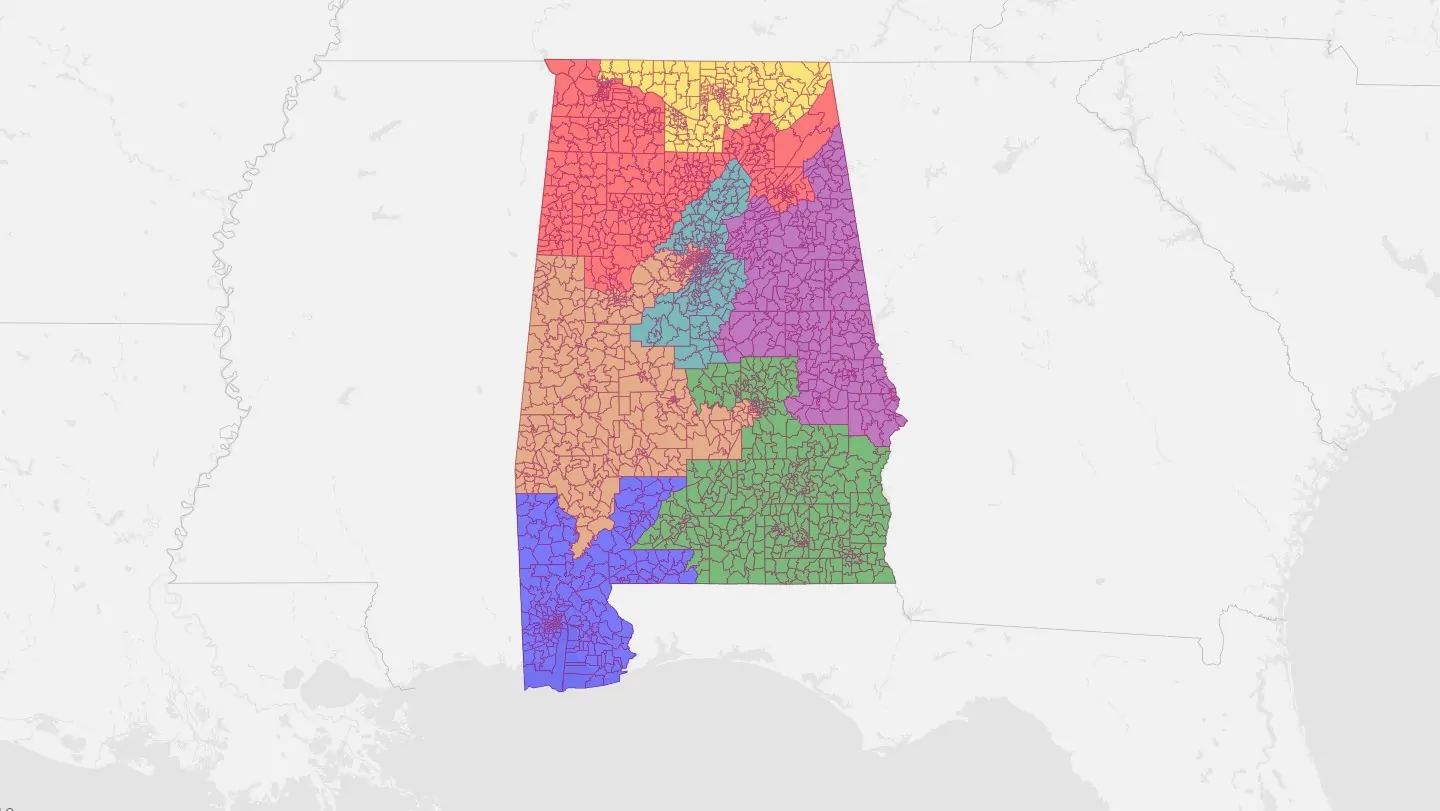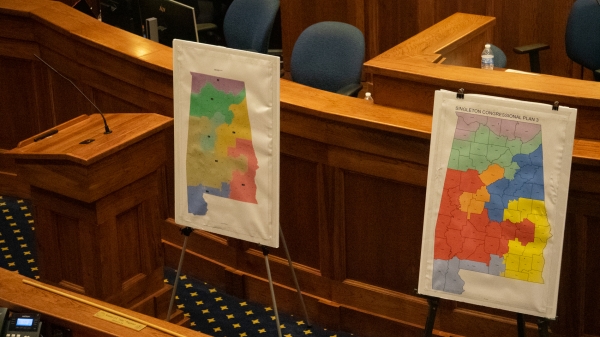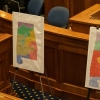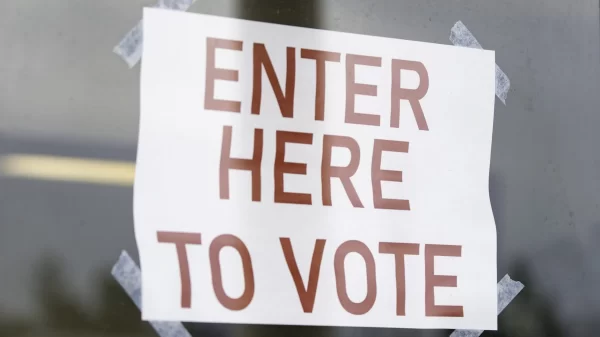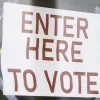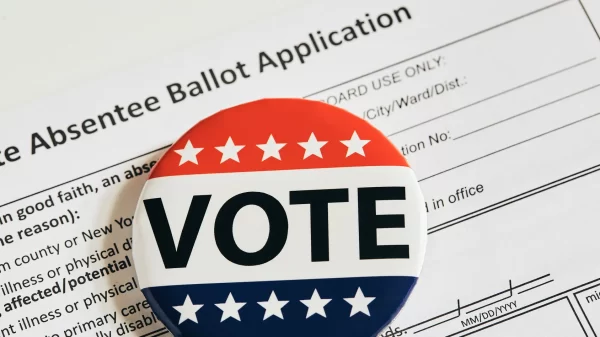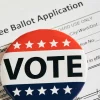During the first public hearing Tuesday, June 27, on drafting a new Congressional district map, some speakers pointed to a map referred to as proposed by “the Singleton plaintiffs” as a potential remedy to the state’s violation of Section 2 of the Voting Rights Act. But it was not plaintiff Singleton’s map but one created by the Campaign Legal Center, a nonpartisan voting rights advocacy group.
In a letter obtained by APR from CLC Senior Redistricting Director Mark Gaber to Dorman Walker, counsel for the reapportionment committee chairs, said the map was never intended to be a remedial plan for drawing district maps but just the opposite. It was presented as an example of the state’s overreach when drawing district lines.
During the public hearing, the map in question was misrepresented as being brought by “the Singleton plaintiffs.” The CLC letter clarifies that the committee was mislabeling the map and disturbingly misinterpreting its purpose.
It is not clear whether the mischaracterization was unintentional or deliberate.
The letter further reiterated the organization’s support of the plan put forward by the plaintiffs who succeeded in their case in Milligan v. Allen to force the redistricting.
“[T]he Committee must understand the context in which (the CLC plan) arose,” the letter states. “Additionally, we wish to dispute the claim that the VRA Plaintiffs’ map may be unconstitutional. It is not.”
Attorney Jim Blacksher told the committee Tuesday that it must be careful in how it addresses the remedial plan, in terms of boundaries being drawn along racial lines.
But Gaber argues in his letter that race must naturally be considered when crafting a solution when the problem itself is racial gerrymandering.
“As CLC explained in its amicus brief, when a redistricting plan—like the current unlawful Alabama congressional plan—has racially discriminatory effects, the Legislature (and the Court) necessarily must be conscious to race in remedying that discrimination,” Gaber said in the letter.
The state argued to the court that Section 2 of the Voting Rights Act could only be constitutional if race was not taken into account when drawing district lines, but the court did not accept that argument.
“That was not the law at the time the State filed its Supreme Court brief. And as the Supreme Court’s decision in Allen v. Milligan makes clear, that is not the law today,” Gaber said in the letter. “As CLC explained in its amicus brief, the argument advanced by the State—that the Legislature cannot consider race in seeking to prevent racial discrimination—‘is a remarkable perversion of the Fourteenth Amendment, which, it bears reminding, was ratified in response to the Civil War, slavery, and political suppression of, among others, Black Alabamians.'”
It is at this point in which the CLC map is included in its amicus brief not, Gable says, as a potential remedial plan, but as an example of the state’s overreach.
“The illustrative plans from CLC’s amicus brief were drawn in response to arguments advanced by the State that the Supreme Court has now flatly rejected,” the letter states. “While the Legislature has flexibility in drawing a remedial plan, this Committee should engage a qualified expert to analyze any potential remedial districts against a robust set of past election data to ensure the remedial districts will indeed function to provide Black voters the rights Section 2 of the VRA guarantees them.”
And the question of whether the Milligan plaintiffs’ map is racially gerrymandered itself has already been dealt with by the court in the course of the lawsuit.
“Any suggestion that it would be an unconstitutional racial gerrymander if the Legislature were to adopt two majority BVAP districts—such as the districts proposed by the VRA Plaintiffs—is unfounded,” Gaber said. “To begin, the district court already rejected the contention that Plaintiffs’ demonstrative districts were racial gerrymanders. This alone answers the question. Moreover, it is apparent on the face of the VRA Plaintiffs’ proposed map that traditional districting criteria, not race, are the predominant motivation.”
Ultimately, the Supreme Court’s robust rejection of the state’s argument means that the reapportionment committee should not again pass up an opportunity for Black voters to have real voting power in two districts, Gaber said.
“The Legislature has an obligation to conduct a data-driven analysis of whether the remedial map it adopts fully cures the VRA violation affirmed by the Supreme Court. Given the Supreme Court’s clear rejection of the State’s arguments, the law requires a remedial plan that provides real and durable electoral opportunities for Black voters in Alabama.”























